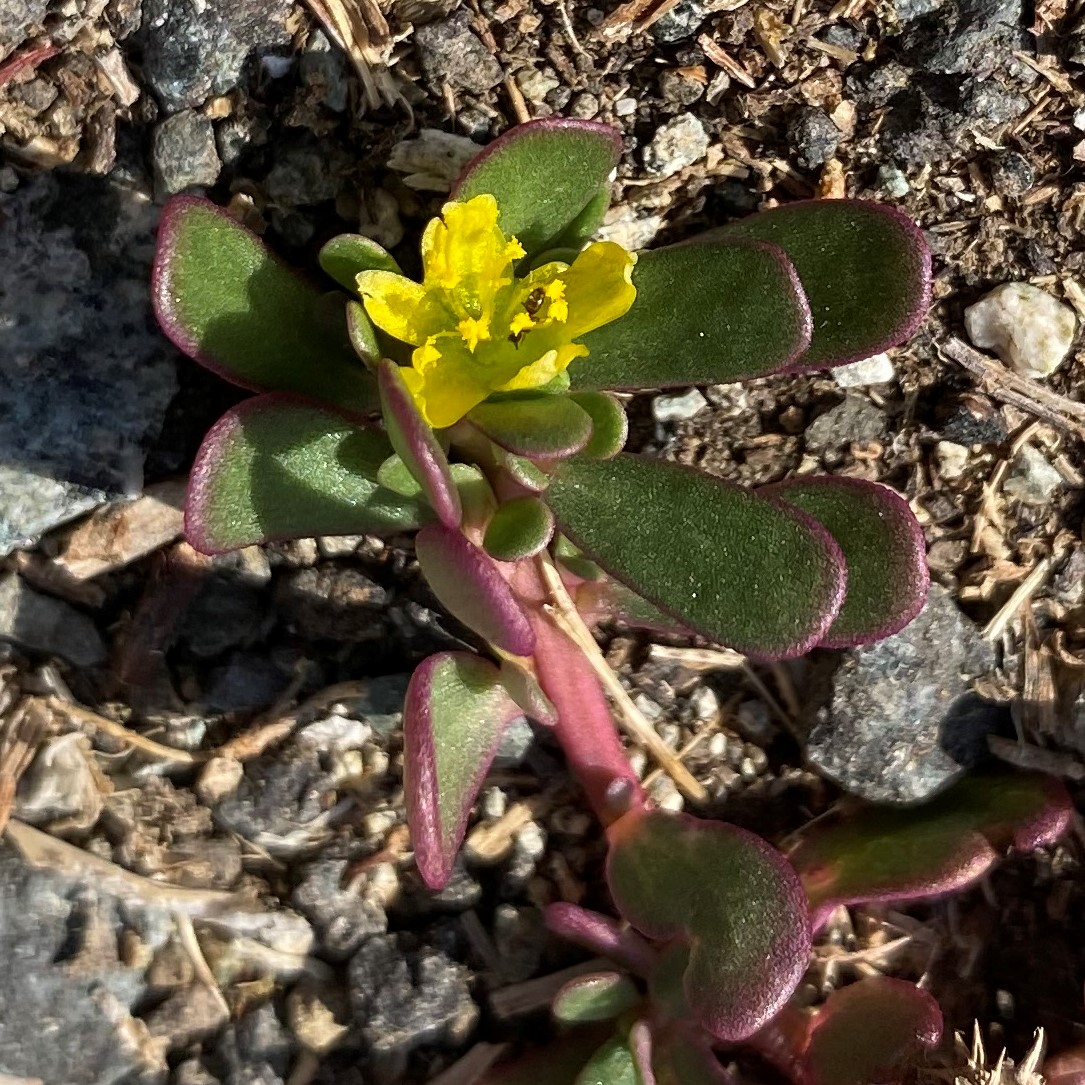Γλιστιρία, Αντράκλα, Πορτουλάκα η λαχανευτική
Etymology of Portulaca oleracea: Linneaus described the genus Portulaca in Species Plantarum, 1753. "Portulaca" is an old Latin name probably deriving from the word "portula" meaning "small gate, postern", referring to the lid of its capsule that opens like a gate. The specific epithet "oleracea" also comes from the Latin "oleris" and means "vegetable", hence oleracea is translated as "resembling vegetable" because Portulaca oleracea is edible.
Regarding the etymology, another one mentions that the word Portulaca derives from the Latin "portare", meaning "to carry" and "lac" meaning "milk" allegedly referring to the milky sap, but there's no milky sap in Portulaca oleracea.
This is the one and only Portulaca kind in the wild Cypriot habitat.
Portulaca oleracea is a common plant in Cyprus. It is encountered all around the island except in the Karpasia peninsula. It grows on soil disturbed by human activity and primarily in cultivated fields, gardens, and even in plants' pots. Moisture is an essential element towards its appearance. It appears at a maximum altitude of 1150 metres. Its flowering period depends on the water provision and is usually between May and October.
The plant may reach 40 centimetres (16 inches) in height. In Cyprus, it is considered edible and it is sometimes sold as a vegetable in supermarkets, as some people use it as an ingredient in salad.


